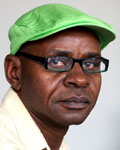Pain and joy of SA's future TV landscape
While the excitement mounts ahead of this upcoming TV revolution, industry watchers foresee a myriad complex problems that might leave a sour taste in many people's mouths.
Complications
First of all, extreme pain is likely to engulf approximately 20% of poor households which cannot afford the set top box as the analogue mode is switched off come 2013, according to the report. Furthermore, there will be complications regarding TV audience measurement and research funding.
Peter McKenzie, MD of Oracle Airtime Sales (OATS), wonders how the audience measurement is going to be done in such a fragmented environment, with hundreds of channels operating on multiple platforms.
“How are we going to measure all this, including PVR and VOD (video on demand)? Will conventional methodology be sufficient? What other options are available? How will it all be funded?” McKenzie asks.
As the conversion to Digital Terrestrial Television (DTT) leads to a rise in the number of channels, fragmentation in viewership and reduced audience sizes will occur and FTA television viewing households splitting across two broadcast platforms (analogue terrestrial and digital terrestrial) during the dual illumination period.
Impact of phased implementation
Mckenzie says, “Phased implementation of DTT may impact on the demographics of the sample.”
It is estimated that new pay TV player On Digital Media (ODM) will offer between 40 and 50 channels and have 500 000 viewers by 2014, while its rival Walking on Water (WoWtv) will offer between four and 10 channels, resulting to at least 3 million subscriber households altogether and over 150 channels available on DTH (direct-to-home).
Currently DStv reaches a total of 3.6 million adults in 380 homes, with 932 adults determining the measurement, according to the sample size method, which is becoming increasingly problematic and not-so-accurate.
To follow international best practice, MultiChoice launched DStv-i, which McKenzie said is an initiative to provide robust research to the industry and assist the company with channel and content decisions.
Complement SAARF data
The contract of DStv-i was awarded by TNS London in 2007 and its findings will complement SAARF data.
Brenda Wortley, OATS director for strategy and research, explains: “Households will be recruited, and their demographics captured, followed by the installation of 1110 decoders activated on radius server during which every button-press on the remote is polled daily, and each household member asked to complete a 2-day diary.
The data will then be retrieved via a modem and the GPRS network.
Furthermore, many observers believe that the advent of digital migration will force many marketing and advertising firms to change their business models.
Overhaul TV buying practices
Chris Hitchings, OATS sales director, says that his company will overhaul TV buying practices that have been around since the '80s, adding that the industry continues to ask for greater accountability and easier buys, with less administration load on the agency.
He adds, “We will manage our inventory more efficiently - 50000 spots per month, with realistic prices - 70% of spots are bought in ‘packages'. We will reduce the “cherry-picking” mentality of many media buyers and optimise the value of core content.”
Lastly, he said his company will use a greater proportion of available inventory and show accountability - offering guaranteed ratings delivery, and offering efficiency, flexibility, innovation - taking a leadership stance.
For more, go to www.oats.co.za.
















